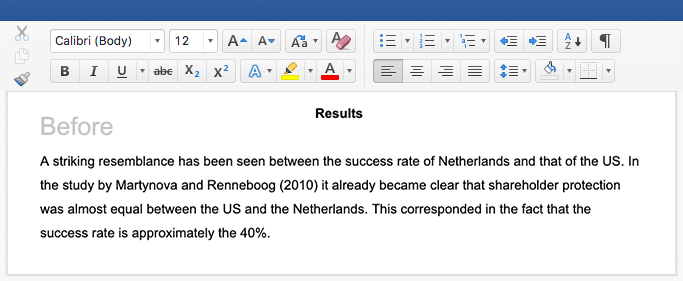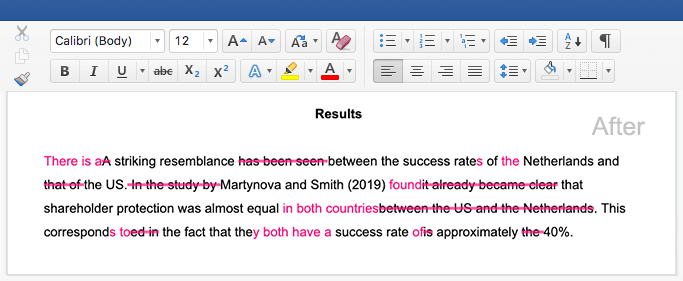When to Use a Comma (,) | Guide, Rules & Examples
Commas are used to split up different parts of a sentence, and when used correctly they bring clarity and flow to your writing. They’re probably the most common piece of punctuation in English, which means that they’re often the most misused.
This article takes you through the most important comma rules and the most common mistakes.
|
|
|
|---|---|---|
| Introducing a sentence | Additionally the project was delayed. | Additionally, the project was delayed. |
| Separating a nonrestrictive clause | Matilda who was unloved by her family escaped from reality by reading. | Matilda, who was unloved by her family, escaped from reality by reading. |
| Joining independent clauses with a coordinating conjunction | Oysters are considered a luxury product so they are expensive. | Oysters are considered a luxury product, so they are expensive. |
|
|
|
|---|---|---|
| Between a verb and its subject | This desk, is too small. | This desk is too small. |
| Between compound subjects or objects | A stack of pancakes, and a lot of coffee make for a delicious breakfast. | A stack of pancakes and a lot of coffee make for a delicious breakfast. |
| Between compound predicates | We distributed questionnaires, and conducted interviews. | We distributed questionnaires and conducted interviews. |
| Between independent clauses | Profits fell, the company collapsed. | Profits fell; the company collapsed. |
Commas to introduce a sentence
If you introduce a sentence with a transition word (e.g., however, hence, indeed, furthermore), follow it with a comma.
- However the model is not always accurate.
- However, the model is not always accurate.
With longer introductory phrases that set the stage for the main part of the sentence, it’s generally best to use a comma, especially if the phrase is more than 3–4 words long.
- According to a recent study of college students many young people would rather end their romantic relationship than go without their phone for a month.
- According to a recent study of college students, many young people would rather end their romantic relationship than go without their phone for a month.
Dependent vs independent clauses
A clause is a group of words that contains at least a subject and a verb. Sentences are often made up of several clauses. Whether you should put a comma (or some other form of punctuation) between them depends on the types of clauses and the relationship between them.
An independent clause is a clause that could stand on its own as a full sentence. A dependent clause, in contrast, does not express a complete thought. It depends on another clause to form a full sentence.
When a dependent clause comes at the start of a sentence, it should be followed by a comma.
- Since Edison invented the light bulb, mass production of candles has decreased.
When a dependent clause comes after an independent clause, a comma is often not necessary, especially if it adds information that is essential to the meaning of the independent clause.
- Mass production of candles has decreased since Edison invented the light bulb.
Commas in compound sentences
A compound sentence contains more than one independent clause. The clauses can be joined by a semicolon, a colon, or a coordinating conjunction (for, and, nor, but, or, yet, so).
When two independent clauses are connected by a coordinating conjunction, always use a comma before the conjunction.
- Many scientists have tried to solve the problem, and none have succeeded.
- There was a power cut, so we ate by candlelight.
In these examples, the parts before and after the conjunction could both stand as full sentences on their own. Therefore, the comma before so and the comma before and are required.
Avoid the comma splice
Two independent clauses should never be joined by a comma alone. This error is called a comma splice.
- Model 1 was selected, it returns more accurate results.
- The project ran over the deadline, data processing was extensive.
- He made me a sandwich in the middle of the night, I fell in love with him.
In each of the examples above, the two parts of the sentence separated by the comma could stand as full sentences by themselves. This means they are independent clauses.
To avoid the comma splice, you can split the two clauses into separate sentences, connect them with another form of punctuation (i.e., a colon, semicolon or dash), or connect them with a conjunction. The table below shows how each approach produces slightly different results.
|
|
|
|
|---|---|---|---|
| Model 1 was selected, it returns more accurate results. | Model 1 was selected. It returns more accurate results. | Model 1 was selected: it returns more accurate results. | Model 1 was selected as it returns more accurate results. |
| The project ran over the deadline, data processing was extensive. | The project ran over the deadline. Data processing was extensive. | The project ran over the deadline – data processing was extensive. | The project ran over the deadline because data processing was extensive. |
| He made me a sandwich in the middle of the night, I fell in love with him. | He made me a sandwich in the middle of the night. I fell in love with him. | He made me a sandwich in the middle of the night; I fell in love with him. | He made me a sandwich in the middle of the night, and I fell in love with him. |
Restrictive vs nonrestrictive clauses
Sometimes the extra information added by a dependent clause is essential to the meaning of the main clause. This is called a restrictive clause because it restricts the meaning of the sentence. Commas should not be used around a restrictive clause.
- Bears that have young cubs can be dangerous.
The information in the sentences is about a specific type of bear – those that have young cubs. If the restrictive clause was removed, the core meaning of the sentence would change: it would say instead that all bears can be dangerous.
In contrast, a nonrestrictive clause adds extra information that isn’t required to understand the main point of the sentence. Instead of restricting the meaning, it expands on the meaning. A nonrestrictive clause should be set off from the main clause with commas.
- Bears, which are usually solitary creatures, can be dangerous.
The information in this sentence is about bears in general, and the nonrestrictive clause adds extra information. If it was removed, the core meaning of the sentence would stay the same: that bears can be dangerous.
Clauses that begin with ‘that’ are always restrictive. In American English, ‘which’ always begins a nonrestrictive clause (so should always be set off with commas). In British English, ‘which’ can be used for both restrictive and nonrestrictive clauses.
The table below shows how the same clause can be restrictive or nonrestrictive, subtly changing the meaning of the sentence.
| Restrictive clause (no commas) | Nonrestrictive clause (with commas) | |
|---|---|---|
| Sentence | The five students who had studied for weeks passed the test. | The five students, who had studied for weeks, passed the test. |
| Meaning | There were more students, but only five had studied for weeks and passed the test. | There were five students who all studied for weeks and passed the test. |
| Sentence | Only the cake that she ate was poisoned. | Only the cake, which she ate, was poisoned. |
| Meaning | There were other cakes, but only the specific cake she ate was poisoned. | There was just one cake, among other things, and only the cake was poisoned. |
| Sentence | I made friends with the neighbour who has a dog. | I made friends with the neighbour, who has a dog. |
| Meaning | I have several neighbours, but I specifically made friends with the one who has a dog. | The neighbour I made friends with happens to have a dog. |
Avoid splitting subjects from verbs
To avoid comma mistakes, pay attention to the function of different words in your sentences and their relation to each other. A comma should generally not come between a verb (the action word) and its subject (the person or thing doing the action).
- This thesis, explores the use of concrete underwater.
- This thesis explores the use of concrete underwater.
Watch out for this error in particular when the sentence contains modifiers that might distract you from the connection between subject and verb.
- Several of the organisations participating in the festival, voiced concerns about the schedule.
- Several of the organisations participating in the festival voiced concerns about the schedule.
Sometimes subjects are separated from verbs by nonrestrictive clauses, words like ‘however’, or other interruptions. These should always be enclosed within two commas.
- This thesis, which is divided into five chapters, explores the use of concrete underwater.
- Several of the organisations participating in the festival, however, voiced concerns about the schedule.
Avoid splitting compound subjects or objects
When two subjects or objects are connected to one verb, make sure not to separate them with a comma.
Compound subject
- Ten plants, and 15 insect species are unique to this valley.
- Ten plants and 15 insect species are unique to this valley.
The ‘plants’ and the ‘insects’ are both subjects of the verb ‘to be’, so no comma should come between them.
Compound object
- The facilitator gave the medicine, and a tracking journal to each participant.
- The facilitator gave the medicine and a tracking journal to each participant.
The ‘medicine’ and the ‘tracking journal’ are both objects of the verb ‘to give’, so no comma should come between them.
Avoid splitting compound predicates
The predicate is the part of a sentence that contains the verb. A compound predicate occurs when two verbs in a sentence are connected to the same subject. In general, a comma should not be used between the verbs.
- Many scientists have tried, and failed to solve the problem.
- Many scientists have tried and failed to solve the problem.
Pay attention to this rule especially when the predicate contains other words and phrases (e.g., modifiers that give more information about the verb).
- The small cat scampered across the floor, and leaped onto the table.
- The small cat scampered across the floor and leaped onto the table
In this example, the cat does two things: ‘scamper’ and ‘leap’. Because both are connected to the same subject (‘he small cat’), no comma should separate them.
There are occasional exceptions to this rule: for example, when a comma is necessary for clarity, or when you want to emphasise a contrast between two verbs.
- The participants provided their names, and signed their registration cards.
- The participants provided their names and signed their registration cards.
- The participants provided their names, but refused to sign their registration cards.
In the third version of the sentence, the conjunction ‘but’ is intended to emphasise the contrast between the verbs ‘provided’ and ‘refused’, so a comma before but is acceptable (though not necessary).
Serial commas
In lists, commas are used to separate each item, and the last item is separated by a conjunction (e.g., and, or). A comma before the conjunction, known as the serial comma or Oxford comma, is optional. Whether or not you choose to use it, make sure to be consistent.
|
|
|---|---|
| The fruit basket contained a pineapple, a papaya, and three mangoes. | The fruit basket contained a pineapple, a papaya and three mangoes. |
| Dogs, cats, and tortoises have been known to act strangely before major seismic events. | Dogs, cats and tortoises have been known to act strangely before major seismic events. |
Sometimes a serial comma is necessary for clarity. One example is when the final list item itself contains a conjunction.
- The three categories of traveler are business, leisure and business and leisure.
- The three categories of traveler are business, leisure, and business and leisure.
Using the serial comma here clarifies that the final item, ‘business and leisure’, is a single category. Without the serial comma, the list is confusing.
Another example is when items at the end of the list could be read as describing an earlier item.
- He had to take care of two dogs, Jane and Louis.
- He had to take care of two dogs, Jane, and Louis.
Here the serial comma clarifies that ‘two dogs’, ‘Jane’, and ‘Louis’ are separate items. Without the serial comma, the sentence seems to say that he had to take care of two dogs named Jane and Louis.


